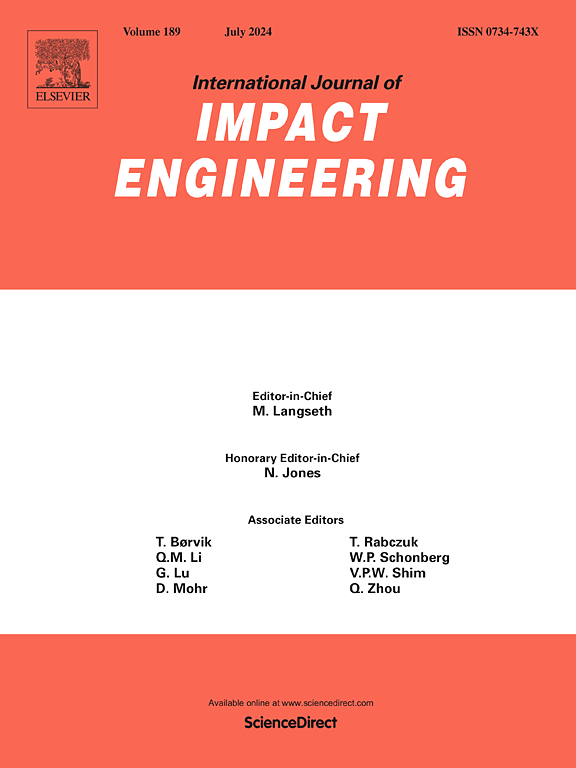Dynamic analysis of additively manufactured tensegrity structures
IF 5.1
2区 工程技术
Q1 ENGINEERING, MECHANICAL
International Journal of Impact Engineering
Pub Date : 2024-12-17
DOI:10.1016/j.ijimpeng.2024.105208
引用次数: 0
Abstract
Herein, we present an analysis, design, and experimental testing of modular prestressed pin-jointed structures constructed from bistable units and inspired by the classical triangular tensegrity prism. Tensegrity structures, characterized by a combination of tension members (cables) and compression members (bars) in a self-equilibrated state, have gained significant attention in engineering over the past two decades due to their unique nonlinear mechanical behavior. The discontinuity of the compression members in tensegrity structures leads to a slightly different failure behavior compared to their lattice structure counterparts, with unprecedented applications. However, traditional fabrication and assembly methods have posed challenges for their widespread adoption. This research benefits from a recently introduced innovative approach for designing and fabricating bistable “tensegrity-like” units where there exists no flexible element in its structure. Vat photopolymerization technology was utilized to create compliant mechanisms based on a triangular tensegrity prism. Two types of structures, namely a double tensegrity-like unit cell and a lattice structure incorporating the triangular tensegrity prism, were fabricated. Quasi-static compression tests were conducted along with high strain rate experiments were conducted using a specialized direct-impact Hopkinson pressure bar setup. Compression tests at both low and high strain rates confirmed the reliable activation of the designed bistable twisting mechanism, even under large displacements, without the need for self-stress. Experimental results at low and high strain rates demonstrated that these low-density units (designed relative density of 20 %) with bistable characteristics are well-suited for applications requiring highly customizable multistable metamaterials. Here, a sudden transition event (snapping), was clearly seen in both quasi-static and dynamic tests. This, indeed, shifts the structure into a secondary stable configuration while maintaining the twisting mechanism throughout the loading cycles. Overall, this study presents a promising avenue for the design and application of tensegrity-like units in various engineering contexts, demonstrating the effectiveness of tensegrities to carry external loads across a wide range of strain rates.
求助全文
约1分钟内获得全文
求助全文
来源期刊

International Journal of Impact Engineering
工程技术-工程:机械
CiteScore
8.70
自引率
13.70%
发文量
241
审稿时长
52 days
期刊介绍:
The International Journal of Impact Engineering, established in 1983 publishes original research findings related to the response of structures, components and materials subjected to impact, blast and high-rate loading. Areas relevant to the journal encompass the following general topics and those associated with them:
-Behaviour and failure of structures and materials under impact and blast loading
-Systems for protection and absorption of impact and blast loading
-Terminal ballistics
-Dynamic behaviour and failure of materials including plasticity and fracture
-Stress waves
-Structural crashworthiness
-High-rate mechanical and forming processes
-Impact, blast and high-rate loading/measurement techniques and their applications
 求助内容:
求助内容: 应助结果提醒方式:
应助结果提醒方式:


